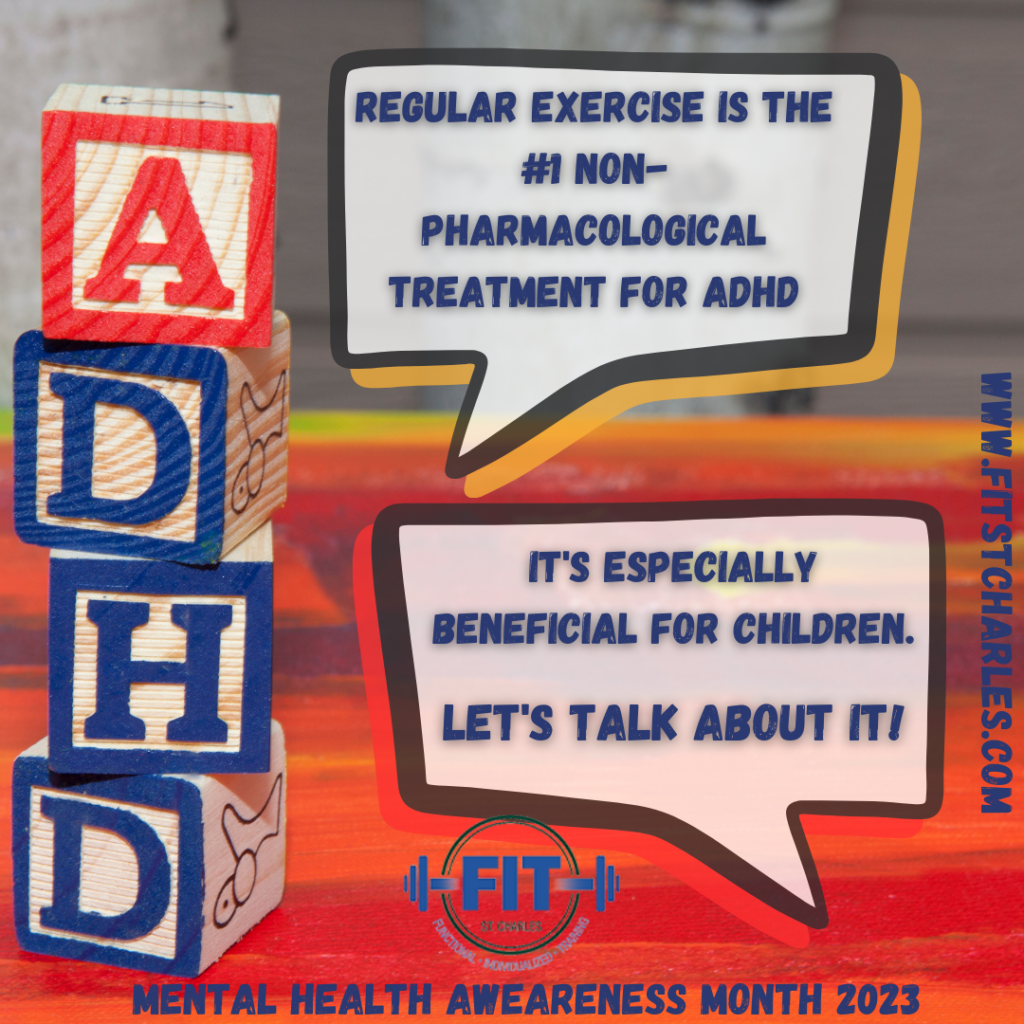
It’s Mental Health Awareness Month, so let’s talk about how regular exercise can help those with ADHD- in fact, exercise is among the top treatments for children and adults with ADHD!
So what is ADHD anyway? Like with most things that have to do with our brains, it’s complicated and different for everyone, but basically it is a fairly common mental health condition that usually leads to a tough time paying attention, controlling impulsive behaviors, and being overactive. ADHD falls in the category of “Neurodivergent” (along with Autism, Dyspraxia, and Dyslexia, although they all present differently with varying degrees of impact on a person’s life). Other symptoms of ADHD include problems sleeping, executive dysfunction, poor memory, poor time management, mood shifts, information processing issues, and forgetting to take care of basic needs.
ADHD is caused by an imbalance of neurotransmitters in the brain, primarily dopamine. People with ADHD have at least one defective gene, the DRD2 gene that makes it difficult for neurons to respond to dopamine- the “feel good” neurotransmitter also involved in the regulation of attention. And what do we know about exercise? It releases dopamine. Many medications used to treat ADHD promote more dopamine release because it can improve focus and relieve symptoms. And like we talked about last week (when we explored how exercise can aid in relieving symptoms of depression) exercise has been proven to improve memory, enhance learning, and improve mood, (as well as potentially help prevent certain brain diseases), all of which are beneficial to treating the most commons symptoms of ADHD.
While exercise has been shown to be beneficial in treating ADHD in people of all ages, it is particularly important for children. This is because ADHD generally affects children more severely than adults. It often causes hyperactivity, and exercise can release some of that pent up energy. Another reason why it is so important for children is because, unlike adults whose brains have fully matured to be better at it, children have a harder time regulating emotion. Emotions can be hard for children to understand, and thus more frustrating. They have a harder time containing those emotions as well. This is true of all children, but especially true in children who have ADHD. Exercise has been proven to reduce aggression, impulsivity, and improve learning ability- all things that make it difficult for children to interact positively with others and cause problems in school, and often at home.
We aren’t saying that children should be doing vigorous HIIT workouts or lifting weights, but adding activity to their lives is always a good idea. All children benefit from increased activity, especially activities that are in a group or family setting, and the CDC recommends that all children 6 and older get at least 60 minutes of physical activity per day to promote healthy development. A great way to add exercise to your child’s life are things like going on hikes, riding bikes together, following an exercise video or participating in group exercise for kids, games like hide and seek or tag, and sports. Even going to the playground or pool is great, and it’s fun!
The takeaway here is that there are legit scientific reasons that exercise helps alleviate symptoms of ADHD, and is particularly important for children. Plus exercise is good for everyone, even those that are considered “neurotypical”, so there isn’t any reason why you shouldn’t add some physical activity to your day today!
